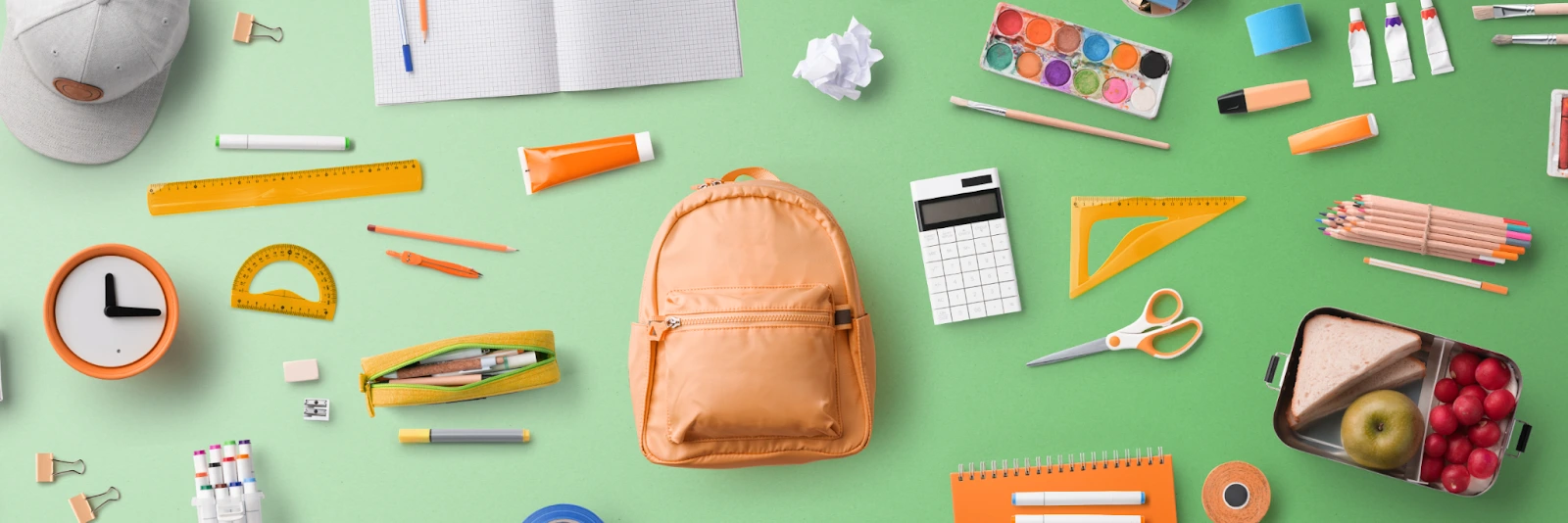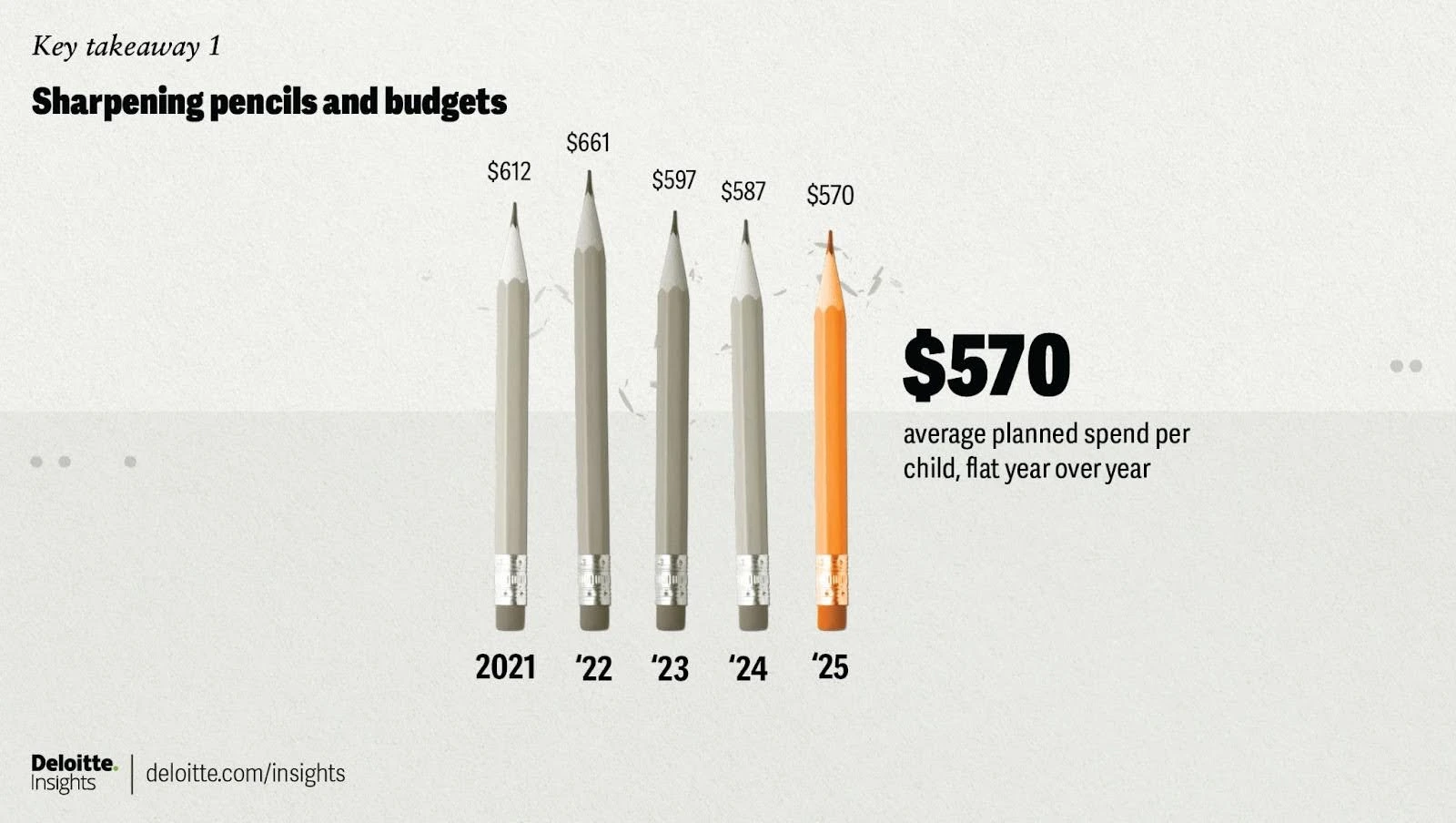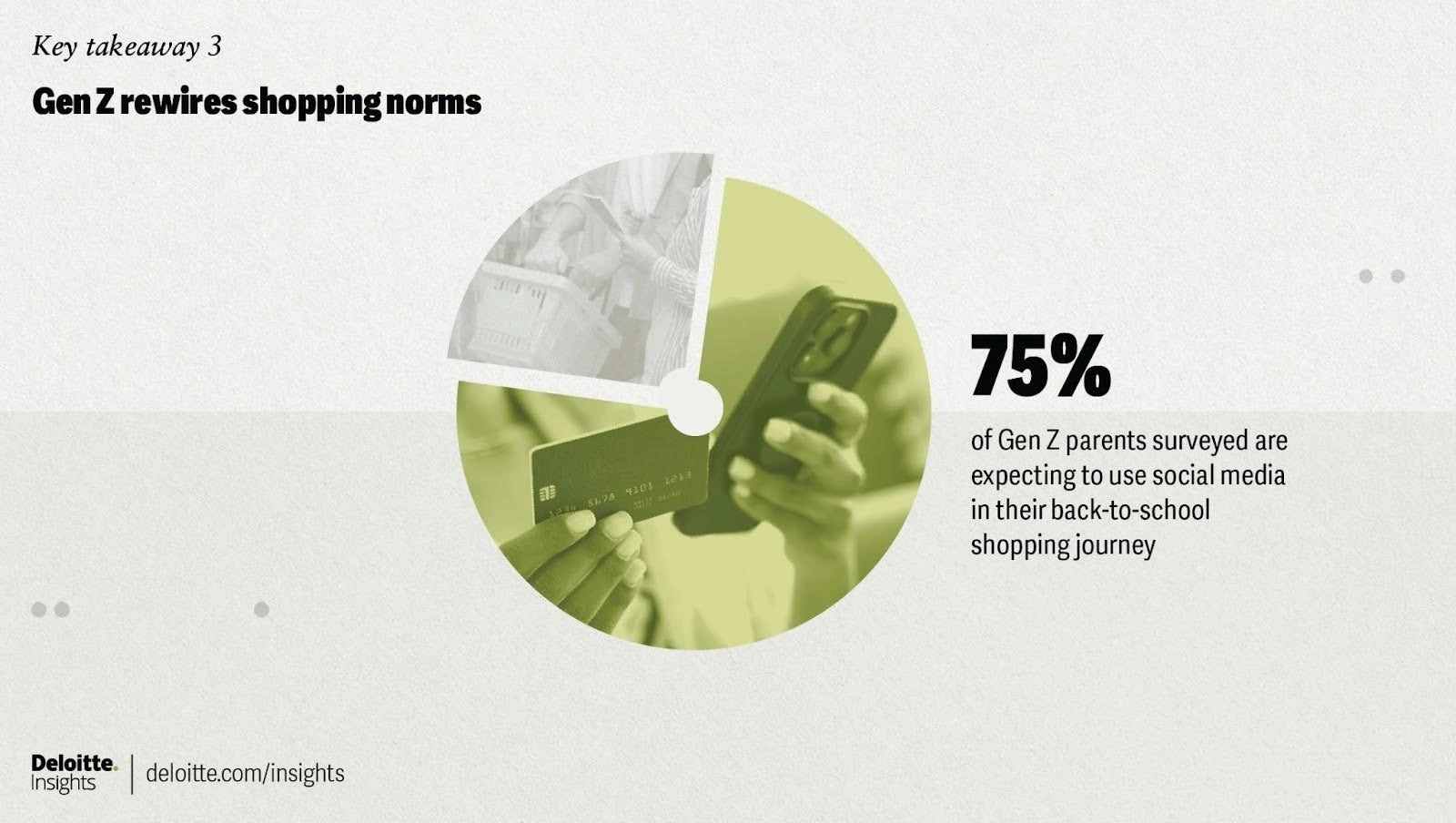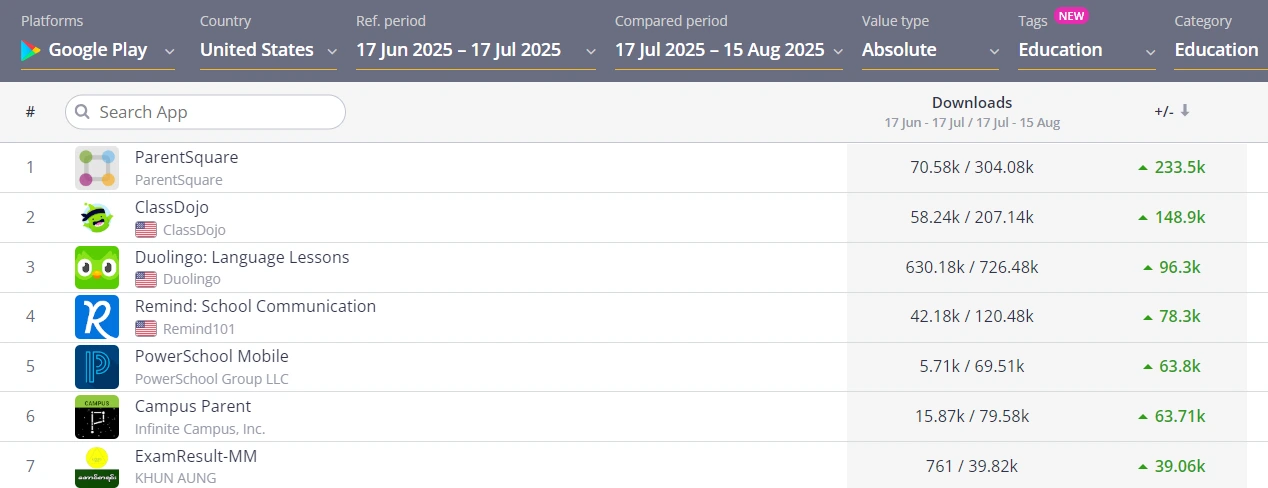Over the past few years, the Back-to-School (BTS) season has evolved into a multi-month marathon, shaped by early planners, last-minute shoppers, and increasingly digital-first consumer habits.
As with any other BTS season, this year presents both challenges and opportunities. It’s a season that demands careful planning, creativity, and a keen understanding of shifting trends, including social media influence, eco-conscious shopping, and hybrid digital-physical needs.
In this article, Mobupps takes a closer look at what marketers can learn from 2024, what trends to expect in 2025, and how to prepare winning strategies that resonate with today’s shoppers. We’ll highlight key vertical performances from last year, and share forward-looking insights to help brands maximize impact during one of the busiest shopping moments of the year.
The last year of the BTS season highlighted the two-wave dynamic of early planners versus last-minute buyers. Retailers and app marketers observed distinct patterns across verticals, providing valuable insights for this year.
Retail and e-commerce experienced early peaks in ad engagement, with parents taking advantage of bulk deals and pre-sale discounts. Fashion and apparel brands benefited from social-driven trends, particularly TikTok videos showcasing first-day-of-school outfits, which created last-minute spikes in demand.
EdTech and productivity apps saw strong adoption in the weeks leading up to the school year, proving that digital tools remain an integral part of students’ preparation. Consumer electronics, including laptops, tablets, and headphones, continued to experience steady growth, driven by the increasing demand for hybrid learning solutions. Even stationery and traditional supplies saw consistent demand, boosted by flash sales and bundled promotions.
This performance snapshot highlights a critical lesson for all marketers: Back-to-School shopping is no longer confined to a single month. Consumers are planning early, reacting quickly to trends, and balancing convenience with value, setting the stage for the strategies marketers must embrace in 2025.

According to a survey conducted by Deloitte Consumer Industry Center, the expected spending per child is $570, as parents would like to focus on just the essentials.
Retailers that succeed in connecting with value-conscious shoppers will be best positioned to tap into the $30.9 billion in potential sales available this season, holding steady year over year.

Source: Link
Younger generations are driving new expectations with their tech-first approach to shopping. Nearly 50% of millennial parents and 75% of Gen Z parents say they plan to use social media as part of their back-to-school shopping journey.
For retailers, this is a major opportunity: shoppers who incorporate social media into their search and purchase process spend about 1.8 times more than those who don’t.

Source: Link
Back-to-school shopping typically follows four stages: research, deal-hunting and comparisons, peak purchasing, and last-minute or top-up buys. This year, however, we’re seeing some shifts within those phases:

Source: Link

Source: Apptica dashboard
Preparing for this season requires a layered, audience-centric approach. So, firstly, start with segmentation. Parents and guardians are primarily value-driven, looking for bundles, bulk discounts, and flexible financing. Students, on the other hand, respond to trend-driven items, gamified promotions, and limited-edition drops that allow them to express individuality. Teachers are a third key audience, often seeking bulk deals and loyalty benefits that help them prepare classrooms efficiently. Tailoring messaging to each segment ensures relevance, increases engagement, and ultimately drives conversion.
Omnichannel journeys are expected. Today’s shoppers move seamlessly between mobile apps, websites, and physical stores. Offering click-and-collect, curbside pickup, and same-day delivery ensures convenience, while consistent messaging across social ads, in-store signage, and email marketing reinforces brand presence.
Sustainability storytelling also remains essential. Campaigns that authentically highlight eco-friendly practices and collaborate with sustainability-minded influencers resonate strongly with today’s conscious consumers. Also, marketers must pay attention to micro-moments. Urgency messaging such as “Only 2 days left!” and geo-targeted notifications for local store inventory can convert late-season shoppers effectively.
Showcasing Back-to-School products allows brands to capture attention while making products feel tangible and desirable. Integrating these videos with shopping features, such as TikTok Shop or influencer affiliate links, can drive instant conversions. Adding value beyond discounts is critical, whether through bundled deals, free shipping thresholds, giveaways, loyalty point multipliers, or buy-now-pay-later options for higher-ticket items.

The Back-to-School season is a multi-phase journey. This time typically brings major surges in education and productivity app usage during the back-to-school season. Brands that engage with trend-driven students and convert last-minute shoppers with speed and convenience may see successful campaigns.
By blending physical and digital offerings, creating targeted and personalized campaigns, leveraging social-driven trends, and highlighting value and sustainability, marketers can turn the seasonal rush into a strategic opportunity. Plan, adapt, and connect with audiences in meaningful ways.
Ring the school bell together with Mobupps!
Over the past few years, the Back-to-School (BTS) season has evolved into a multi-month marathon, shaped by early planners, last-minute shoppers, and increasingly digital-first consumer habits.
As with any other BTS season, this year presents both challenges and opportunities. It’s a season that demands careful planning, creativity, and a keen understanding of shifting trends, including social media influence, eco-conscious shopping, and hybrid digital-physical needs.
In this article, Mobupps takes a closer look at what marketers can learn from 2024, what trends to expect in 2025, and how to prepare winning strategies that resonate with today’s shoppers. We’ll highlight key vertical performances from last year, and share forward-looking insights to help brands maximize impact during one of the busiest shopping moments of the year.
The last year of the BTS season highlighted the two-wave dynamic of early planners versus last-minute buyers. Retailers and app marketers observed distinct patterns across verticals, providing valuable insights for this year.
Retail and e-commerce experienced early peaks in ad engagement, with parents taking advantage of bulk deals and pre-sale discounts. Fashion and apparel brands benefited from social-driven trends, particularly TikTok videos showcasing first-day-of-school outfits, which created last-minute spikes in demand.
EdTech and productivity apps saw strong adoption in the weeks leading up to the school year, proving that digital tools remain an integral part of students’ preparation. Consumer electronics, including laptops, tablets, and headphones, continued to experience steady growth, driven by the increasing demand for hybrid learning solutions. Even stationery and traditional supplies saw consistent demand, boosted by flash sales and bundled promotions.
This performance snapshot highlights a critical lesson for all marketers: Back-to-School shopping is no longer confined to a single month. Consumers are planning early, reacting quickly to trends, and balancing convenience with value, setting the stage for the strategies marketers must embrace in 2025.

According to a survey conducted by Deloitte Consumer Industry Center, the expected spending per child is $570, as parents would like to focus on just the essentials.
Retailers that succeed in connecting with value-conscious shoppers will be best positioned to tap into the $30.9 billion in potential sales available this season, holding steady year over year.

Source: Link
Younger generations are driving new expectations with their tech-first approach to shopping. Nearly 50% of millennial parents and 75% of Gen Z parents say they plan to use social media as part of their back-to-school shopping journey.
For retailers, this is a major opportunity: shoppers who incorporate social media into their search and purchase process spend about 1.8 times more than those who don’t.

Source: Link
Back-to-school shopping typically follows four stages: research, deal-hunting and comparisons, peak purchasing, and last-minute or top-up buys. This year, however, we’re seeing some shifts within those phases:

Source: Link

Source: Apptica dashboard
Preparing for this season requires a layered, audience-centric approach. So, firstly, start with segmentation. Parents and guardians are primarily value-driven, looking for bundles, bulk discounts, and flexible financing. Students, on the other hand, respond to trend-driven items, gamified promotions, and limited-edition drops that allow them to express individuality. Teachers are a third key audience, often seeking bulk deals and loyalty benefits that help them prepare classrooms efficiently. Tailoring messaging to each segment ensures relevance, increases engagement, and ultimately drives conversion.
Omnichannel journeys are expected. Today’s shoppers move seamlessly between mobile apps, websites, and physical stores. Offering click-and-collect, curbside pickup, and same-day delivery ensures convenience, while consistent messaging across social ads, in-store signage, and email marketing reinforces brand presence.
Sustainability storytelling also remains essential. Campaigns that authentically highlight eco-friendly practices and collaborate with sustainability-minded influencers resonate strongly with today’s conscious consumers. Also, marketers must pay attention to micro-moments. Urgency messaging such as “Only 2 days left!” and geo-targeted notifications for local store inventory can convert late-season shoppers effectively.
Showcasing Back-to-School products allows brands to capture attention while making products feel tangible and desirable. Integrating these videos with shopping features, such as TikTok Shop or influencer affiliate links, can drive instant conversions. Adding value beyond discounts is critical, whether through bundled deals, free shipping thresholds, giveaways, loyalty point multipliers, or buy-now-pay-later options for higher-ticket items.

The Back-to-School season is a multi-phase journey. This time typically brings major surges in education and productivity app usage during the back-to-school season. Brands that engage with trend-driven students and convert last-minute shoppers with speed and convenience may see successful campaigns.
By blending physical and digital offerings, creating targeted and personalized campaigns, leveraging social-driven trends, and highlighting value and sustainability, marketers can turn the seasonal rush into a strategic opportunity. Plan, adapt, and connect with audiences in meaningful ways.
Ring the school bell together with Mobupps!

